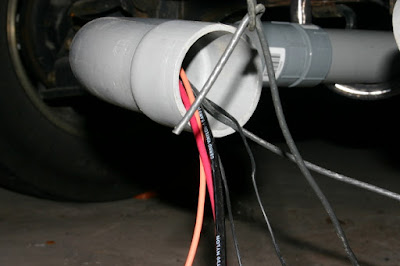To everyone following this blog (all two of you, you know who you are) I apologize for not posting for a while. I'm sure you have been waiting with bated breath and were in the midst of going into withdrawal :-)
I haven't been posting, but that doesn't mean work has not been progressing. Currently I'm waiting for some wire to arrive. It is on back order.
In the mean time I've been working on the instrument cluster. Until I started taking the instrument cluster apart I didn't realize how few of the original cluster lights and gauges I could get rid of. Here is a picture of the original cluster.

The obvious gauge I wouldn't need was the fuel level. Some people actually do keep it and use it to track battery state of charge. I have another gauge for this so out it goes. Same with the engine temperature; no engine to temperature :-)
There are a bunch of lights indicating various engine conditions: too hot, change oil, service, battery, low coolant, etc. These would be sacrificed.
In the end there are only a few things I wanted to retain: tachometer, speedometer, odometer, turn signals, high beam indicator, and night time cluster illumination. In addition I will be adding a new gauge that lets me monitor battery voltage, battery amps, amps used, amps remaining, and a few other things.
This is the exploded view of the cluster.

In the old days each light and gauge in the instrument panel (I/P) would have dedicated wires. Vehicle speed sensor (VSS) to speedometer, crank position sensor (CKP) to tachometer, etc. Now a days cars have several computers collecting and dispensing information. Two of these are the engine control module (ECM) and body control module (BCM). They talk to each other and the sensors via a controlled area network bus (CAN Bus).
So the VSS sends its signal to the ECM. The ECM converts the analog VSS signal to a digital signal and broadcasts the information over the CAN. The BCM hears the VSS signal broadcast on the CAN and retransmits it to the I/P. The I/P then has a chipset that signals the speedometer needle to move.
They say that going from the analog way to the digital way saves 30meters of wire and decreases the car weight by dozens of pounds. It also makes "hacking" into the car electronics a hell of a lot harder. Oh for the pre-acronym days :-)
So here's the I/P circuit board. The four big white things are the four gauges. The bulbs are for the turn signals and I/P illumination. The little, rectangular white spots are LED's for all the warning lights.

Now I need room to fit the new gauge that keeps track of the batteries and motor. It has two parts, a display and a dial to select different display functions. Here is the display portion. The selector dial is a little smaller.

I decided that the best place to place the display was where the old temperature gauge was located. There were a few LED's there that I would not need. So after cutting out the unnecessary circuits and mounting the display I have this:


Next I had to do the same thing for the selector dial. The old fuel gauge on the far left was a good place. I also soldered a few wires to some LED"s to use as indicator/warning lights for the controller. This is the rear of the board after everything was mounted.

Here's what the front looks like.

On the left is the selector dial stem. On the right is the new display. I painted over the old markings where the thermometer was located. I need to paint over the old fuel gauge markings.
Next step is to get the I/P working again. I installed the I/P back into the dash and powered it up. The turn signals work (they are the only thing on the I/P that is directly wired and does not go through the CAN). The I/P illumination also works.
As expected most of the LEDS no longer work since I cut through the portion of the board that contained their circuitry. As for the speedometer and tach testing them will be a little tougher. I need to reconnect the ECM since the VSS provides data to the speedometer via the ECM.
The tach is a little tougher. Since I removed the engine I no longer have a crankshaft or a crankshaft sensor to provide data for the tach. I do have a sensor that will provide the new motor RPM's. I plan on connecting the new sensor to the ECM in place of the old sensor. Hopefully the new signal should satisfy the ECM. If not then I'll just pull the old tach and get an old fashioned analog one as a replacement.

























































